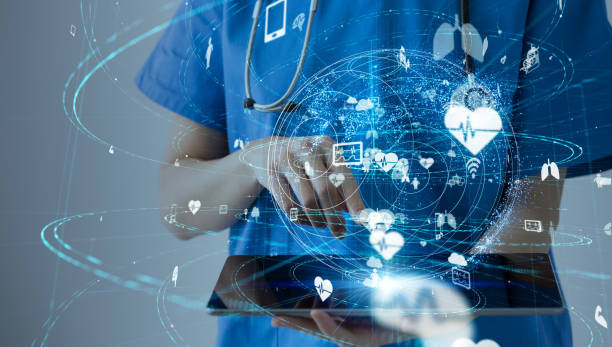Healthcare decision-makers rely on data grounded in evidence of improved health outcomes, including remote patient monitoring outcomes when considering the implementation of telehealth and remote patient monitoring services. However, synthesizing the large body of research on these technologies can be challenging. This article distills recent findings, highlighting the positive impact of telehealth interventions across various domains, particularly in managing chronic conditions and enhancing remote patient monitoring outcomes.
Telehealth & Remote Patient Monitoring Outcomes
In 2014, U.S. Senators Bill Nelson and John Thune requested a literature review on the value of telehealth and remote patient monitoring covering a broad range of telemedicine topics in the form of an evidence map. The goal was to identify topics where systematic reviews have shown evidence of effectiveness and remote patient monitoring outcomes. In addition, the research team identified areas for future telehealth and remote patient monitoring research.
Remote Patient Monitoring Evidence
The ambitious effort to compile this evidence came in a comprehensive meta-analysis study encompassing 58 systematic reviews and numerous primary studies published since 2006. The researchers advocate for broader adoption of these technologies and emphasize the importance of advancing initiatives even in areas with limited evidence, as the study’s authors underscored, who urge the industry not to delay progress based on existing knowledge.
Sufficient evidence exists in support of remote patient monitoring for use in patients with chronic conditions. Overall, the systematic review shows the effectiveness of telehealth when used for chronic conditions is generally positive. Of the 31 studies, 13 (42%) reported benefits in primary outcomes, and 11 reported potential benefits. When it came to systematic reviews of remote patient monitoring for heart failure patients, 17 systematic reviews concluded that, “remote monitoring improves mortality and quality of life as well as reduces hospitalizations, and as a consequence, health care costs.”
Telehealth Evidence
Much research now confirms that telehealth interventions result in positive outcomes when used in conjunction with remote physiological monitoring. This is noted in particular for remote patient monitoring outcomes in patients with cardiovascular/heart and respiratory diseases. The positive outcomes include improving mortality rates, patient quality of life, and reduced hospital admissions.
Another advantage of telehealth and remote monitoring is expanded healthcare access in remote and rural areas. RPM devices aid in regular vital sign monitoring for those living in rural areas and managing chronic conditions. Increased access to health care also supports better communication and interaction between patients and physicians. The meta-study noted that telehealth can also be expanded for use in critical care units with a shortage of healthcare providers. Overall, the literature review showed that telehealth consistently provides rural communities with benefits.
Telehealth & Remote Patient Monitoring in 2023
How will researchers continue gaining additional evidence associated with remote patient monitoring research on patient outcomes? It is expected that 2024 will be a year of clinical trials and experimentation with new methods for expanding virtual health care. AI technology continues showing potential in both disease diagnostics and prevention but is still in the early stages of development.
The meta-analysis study previously mentioned suggests future research shift to implementation and practice-based research. These topics might include telehealth for consultation, use cases in intensive care units (ICUs), and maternal and child health applications. Other topics of potential interest for study are evidence-based studies in telehealth for triage in urgent care, primary care, management of pediatric conditions, and the integration of behavioral and physical health.
Considering Remote Patient Monitoring in 2024?
During the COVID-19 PHE, the many benefits of remote monitoring became clear, leading to increased use of telehealth and remote patient monitoring services. This article has provided evidence of effectiveness and positive patient outcomes in telehealth and RPM. The Boston Consulting Group reports that many healthcare providers believe that 60% of patient interactions for primary care will be conducted virtually within three to five years.
Moreover, Digital health governance places a strong emphasis on patient-centric healthcare. With the integration of technology, patients have more access to their health data, which empowers them to take an active role in their health management. This shift towards patient engagement and empowerment can improve health outcomes.
There are many additional benefits to remote patient monitoring, including:
- Improving healthcare access, especially for underserved and rural patients
- Reducing costs incurred through unnecessary office visits and hospitalizations
- Increasing patient convenience, engagement, and satisfaction
- Generating increased company revenue.
Are you considering implementing RPM in 2024? Book a free RPM demo with Tenovi.






